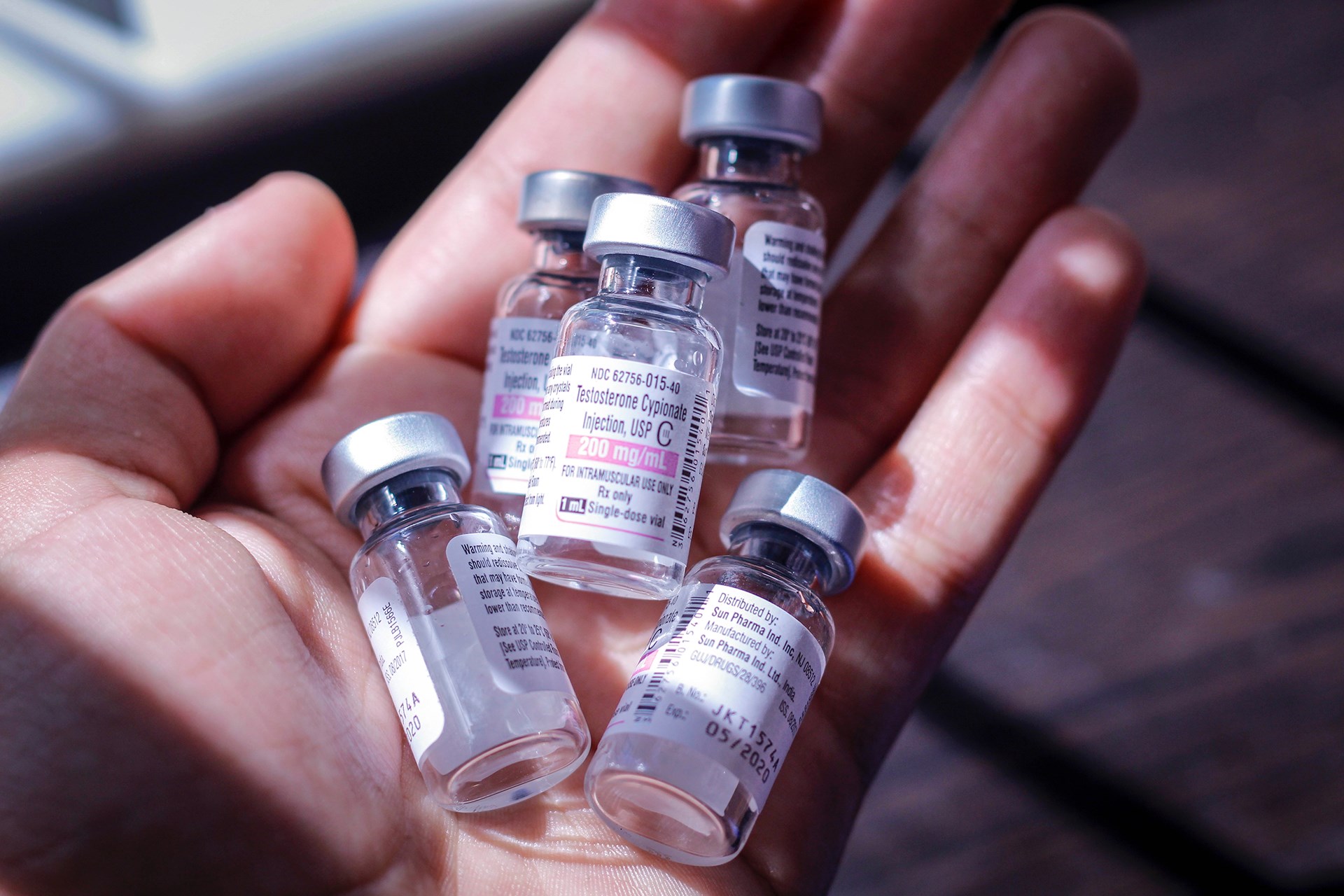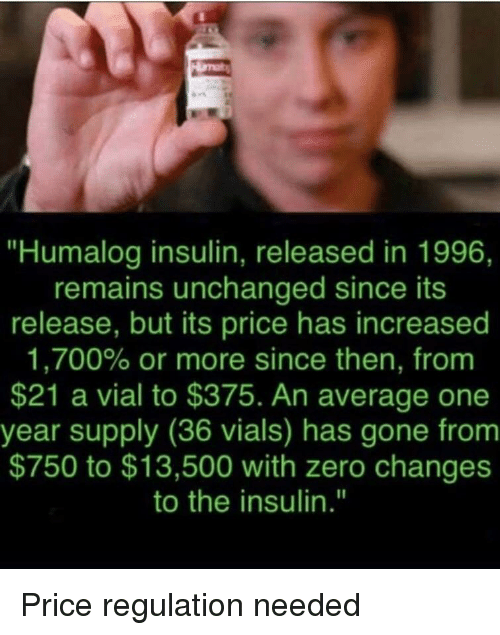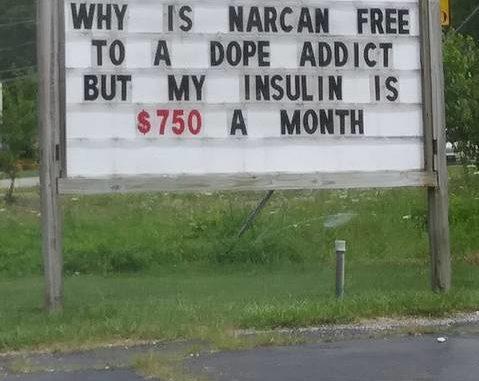https://fee.org/articles/why-we-don-t-have-generic-insulin/
Why We Don’t Have Generic Insulin
In a free market, competition is the best way for improvements in the levels of quality and service that a consumer receives in their products.

Photo by Adam Lemieux on Unsplash

Daniel Kowalski
“Why is Narcan free to a dope addict but my insulin is $750 a month?” asks an online meme that has since gone viral. “Humalog cost $21 a vial in 1996 and now that same insulin is $375” claims another meme designed to call for price regulations. While these statements do have some truth behind them, on the whole, they are bumper sticker slogans designed to elicit emotional responses rather than encourage the reader to critically examine what could be the reasons for the price increases.
While insulin is manufactured by large drug companies, it is very different from other medicines that now have cheaper generic forms because it is classified as a biological product instead of a chemical one.

There are many reasons and theories on why the costs have continued to rise much faster than inflation has in the past twenty years. Corporate greed, government overregulation, constant technological advances that greatly improve the product while also requiring huge research & development budgets, and a market system full of middlemen between the consumer and producer are all possible reasons for the list price of insulin tripling between 2002 and 2014.

A Brief History of Insulin
Insulin is a hormone produced by the body’s pancreas to breakdown sugars in the bloodstream. When the pancreas stops producing insulin, the body’s blood sugar levels rise to often dangerous, life-threatening levels. As of 2015, there are 21 million Americans (roughly one in 15) diagnosed with diabetes, and 26 percent of them take insulin to survive. One hundred years ago, diabetes was much rarer to find in the population, and for those who had it, it was often fatal. In essence, it was a death sentence.
It is important for diabetic patients to maintain a constant blood sugar level throughout the day.
Canadian researchers Frederick Banting and Charles Best created a process in 1922 that removed and purified insulin from cows and pigs for use in humans. Early trials of the first insulin were a success. Knowing they didn’t have the means to mass produce insulin for public use, they sold the patent (which included the patent rights on any insulin manufacturing improvements) for $3.
For over 50 years, animal-derived insulin was the only kind available for use. But in the late 1970s, there was a major breakthrough. Using recombinant DNA technology, drug companies were able to take bacteria and then sequence the DNA to synthesize insulin that’s very close to the type created by the human body. Humulin, the first of this kind of insulin, hit the market in 1982.
The Costs of Innovation
It is important for diabetic patients to maintain a constant blood sugar level throughout the day, or life-threatening problems can quickly develop. The perfect amount of insulin injected into the body at the right intervals is needed to maintain this balance.
In the 30 years since the first synthetic insulin was introduced to the market, drug companies have made vast improvements in the quality and range of insulin they provide. Patients are now able to take as little as two injections a day, instead of multiple times, while closely monitoring their diets.
Innovation costs a lot of money on the research and development end because it is expensive to develop and test new drugs. This constant improvement has also kept the patents for insulin in the hands of three big companies—Sanofi, Novo Nordisk, and Eli Lilly—because the original 1922 insulin patent included patent rights on any manufacturing improvements. To date, a fourth drug company has not entered the market because biologically replicating a human hormone to manufacture insulin is difficult.
However, some of the patents these companies hold started to expire in 2014, allowing other companies to produce the drug without the R&D overhead.
To date, a fourth drug company has not stepped up to the plate. Manufacturing insulin is different from other drug manufacturing because you are biologically replicating a human hormone rather than creating a chemical medicine that interacts with the body.
The costs of purchasing the equipment necessary to enter this market are prohibitively expensive. Plus, there is no guarantee that fourth-party insulin will make it to market because it is classified by the FDA as a biosimilar, and it’s subject to stricter regulations than other medicines.



















































